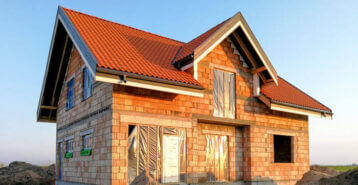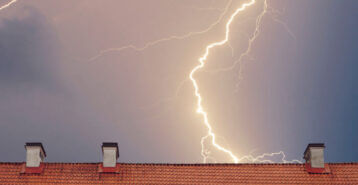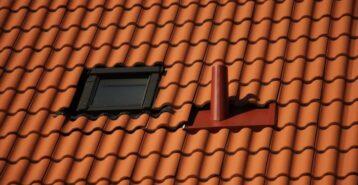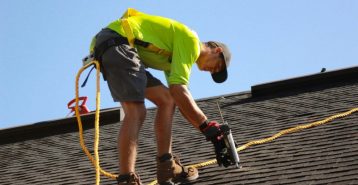What Is Rubber Roofing?
Rubber roofing is a durable, affordable, and eco-friendly option made from recycled materials like old tires, plastic, and slate dust. It’s most common on flat or low-slope roofs but is also available in shingle form for sloped roofs. Rubber shingles mimic the look of traditional asphalt or slate while offering added durability and energy efficiency.
Rubber roofing is designed to hold up against harsh weather, resist cracking, rotting, and mold, and doesn’t soak up moisture like other materials. Plus, it can help lower your energy bills by providing strong insulation.
One of the biggest perks? Rubber roofs are easy to fix. If you spot a leak, you can often repair it with a simple patch or by replacing a few shingles without redoing the entire roof.

Average Cost to Install a Rubber Roof
The cost to install a rubber roof typically ranges from $4 to $14 per square foot. For a 2,500-square-foot roof, that totals $10,000 to $35,000. The price is higher than asphalt but lower than premium options like slate, clay, or metal. Costs can vary based on the roof size, type of rubber material, and the complexity of your project.
Cost by Roof Size
While the size of your roof isn’t the only factor that impacts your roofing cost, it’s the biggest one. Here’s how much you can expect to pay to install a new rubber roof:
| Roof Size | Installation Cost |
|---|---|
| 1,000 sq. feet | $4,000 to $14,000 |
| 1,500 sq. feet | $6,000 to $21,000 |
| 2,000 sq. feet | $8,000 to $28,000 |
| 2,500 sq. feet | $10,000 to $35,000 |
| 3,000 sq. feet | $12,000 to $42,000 |
Cost by Type
There are various types of rubber roofing, each with its own benefits and costs:
| Type | Cost (Incl. Installation) | Total Cost for 2,500-Square-Foot Roof |
|---|---|---|
| TPO (Thermoplastic Polyolefin) | $4 to $14 per sq. foot | $10,000 to $35,000 |
| EPDM (Ethylene Propylene Diene Monomer) | $4.25 to $12 per sq. foot | $10,625 to $30,000 |
| PVC Roofing (Polyvinyl Chloride) | $5.50 to $12 per sq. foot | $13,750 to $30,000 |
| Rubber Shingles | $4 to $13 per sq. foot | $10,000 to $32,500 |
TPO Roofing (Thermoplastic Polyolefin)
TPO is a lightweight, bright white membrane that reflects sunlight. It’s a great pick if you live in a hot climate and want to keep your home cooler. It’s also resistant to dirt and algae buildup, so it stays clean longer.
On average, TPO roofing costs $4 to $14 per square foot, or $10,000 to $35,000 for a 2,500-square-foot roof.

EPDM Roofing (Ethylene Propylene Diene Monomer)
EPDM is a flexible, black rubber material that’s commonly used on flat roofs. It can handle extreme weather, from high winds to hail, and it expands and contracts with temperature changes without cracking.
On average, EDPM roofing costs $4.25 to $12 per square foot, or $10,625 to $30,000 for a 2,500-square-foot roof.
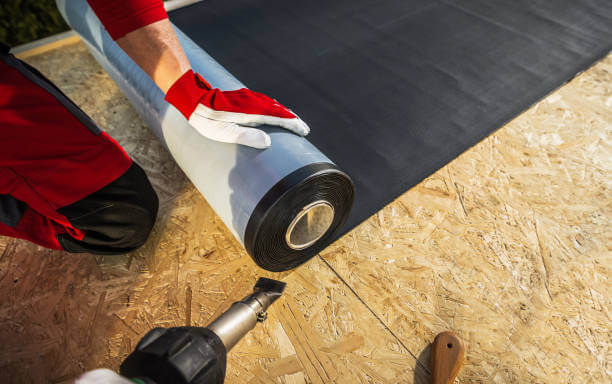
PVC Roofing (Polyvinyl Chloride)
PVC roofing is made from durable plastic and reinforced with polyester or fiberglass layers. It’s strong, fire-resistant, and holds up well against chemicals and standing water, which makes it ideal for flat roofs in rainy areas.
On average, PVC roofing costs $5.50 to $12 per square foot, or $13,750 to $30,000 for a 2,500-square-foot roof.
Rubber Shingles
Rubber shingles look like asphalt or slate shingles but last longer and require less maintenance. They’re made from recycled materials and come in a variety of colors and styles to match your home.
On average, rubber shingles cost $4 to $13 per square foot, or $10,000 to $32,500 for a 2,500-square-foot roof.

Additional Cost Factors
Several other factors can impact your total rubber roof installation costs:
Labor Costs
Labor is a significant portion of your total roofing cost. The average cost of labor can range from $1.50 to $3.50 per square foot, depending on the experience and expertise of the contractor. More skilled professionals may charge higher rates, but they can ensure a better-quality installation, which can save you money in the long run by preventing issues.
Geographical Location
Where you live plays a role in your total roofing cost. For example, roofing projects in urban areas or regions with higher living costs may be more expensive due to higher labor rates and transportation costs. Areas with harsh climates may also require specialized materials, which can raise the price.
Removal of the Old Roof
If your old roof is in poor condition, you may need to have it removed before installing your new rubber roof. This adds extra labor and disposal fees. Roof tear-off costs typically range from $1 to $2 per square foot, but more complex tear-offs may cost more.
Roof Complexity
The shape and design of your roof will impact labor time and material costs. Roofs with multiple levels, steep slopes, valleys, dormers, chimneys, or skylights require more time and skill to install. More complex roofs may also require additional flashing, underlayment, and sealing materials.

Saving Money on Rubber Roof Installation
Here are a few tips to help you lower the cost of your rubber roof:
- Request Multiple Quotes: Always get estimates from at least three local, licensed roofing contractors. This allows you to compare pricing, services offered, and warranties. Don’t automatically choose the lowest bid — evaluate the contractor’s experience and past customer reviews as well.
- Schedule in the Off-Season: Roofing companies are typically busier in the spring and summer. Scheduling your project in late fall or early winter may help you secure a lower price, as demand is lower during these times.
- Maintain Your Roof Regularly: Keeping your rubber roof clean and free of debris will extend its lifespan and reduce the need for repairs. Most manufacturers recommend cleaning your roof three to four times a year to maintain its warranty.
Pros and Cons of Rubber Roofing
Benefits
Rubber roofing offers many homeowner-friendly benefits:
- Long-Lasting: Typically lasts 15 to 30 years.
- Energy-Efficient: Reduces heat loss in winter and heat absorption in summer.
- Low Maintenance: Requires minimal upkeep compared to other roofing materials.
- Weather-Resistant: Won’t rot, crack, or absorb moisture.
- Eco-Friendly: Made from up to 95% recycled materials, including old tires.
- Easy Repairs: Small leaks or damage can be patched without replacing large sections.
Drawbacks
- Potential Mold and Algae Spots: Black spots can develop but are easy to clean.
- Odor: Newly installed rubber roofs may have a strong smell that fades over time.
- Professional Installation Needed: DIY installation is risky and may void your warranty.
- No Petroleum Coatings: Coatings containing petroleum distillates can cause rubber shingles to blister.
Repairing vs Replacing a Rubber Roof
One of the primary benefits of rubber roofing is how easy it is to repair. However, in some cases, a full replacement may be necessary.
When to Repair
A repair might be the right choice if:
- The damage is small and localized (like a tear or crack).
- There are only one or two leaks.
- The roof is still within its expected lifespan (less than 20 years old).
- The underlying structure is in good shape.
Cost of Repairs:
Most rubber roof repairs cost between $150 and $650, depending on the size and severity of the damage. DIY patch kits can cost as little as $50 to $150 if you’re comfortable handling minor repairs yourself. However, DIY repairs may void your warranty.
When to Replace
You may need a full replacement if:
- There’s widespread damage, like cracking or blistering over large areas.
- Your roof is more than 20 to 30 years old.
- The roof structure has been compromised by water damage.
- You’ve already made several repairs, and issues keep coming back.
- Your roof’s warranty has expired, and repairs won’t be covered.
Cost of Replacement:
A full rubber roof replacement typically costs $4.25 to $8.25 per square foot. For a 2,500-square-foot roof, this totals $10,625 to $20,625.
Find a Roofing Pro
If you’re unsure whether to repair or replace your roof, it’s a good idea to get a professional inspection. A local roofing expert can give you honest advice and help you weigh your options. Modernize can connect you with up to four local contractors so you can get quotes and begin your roofing project. Click below to get started.


